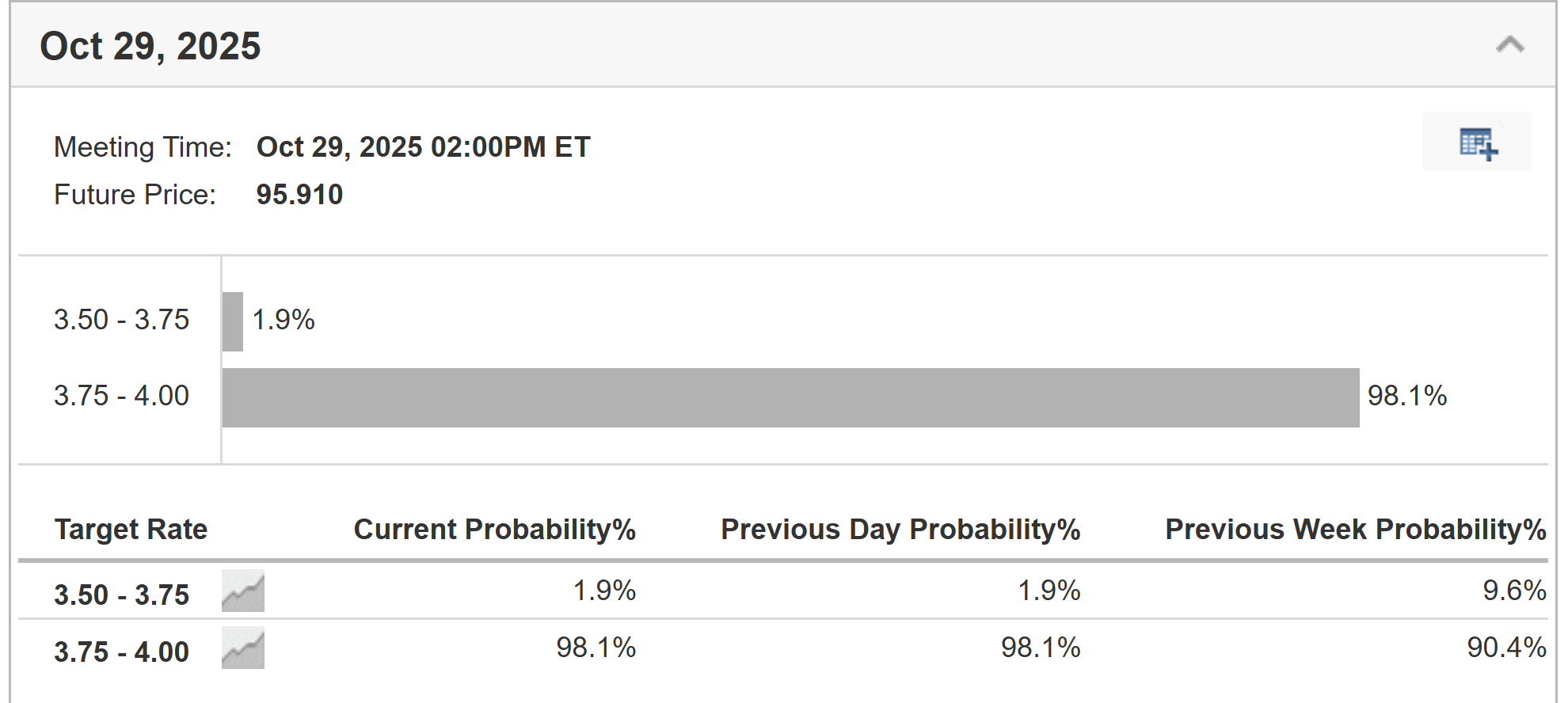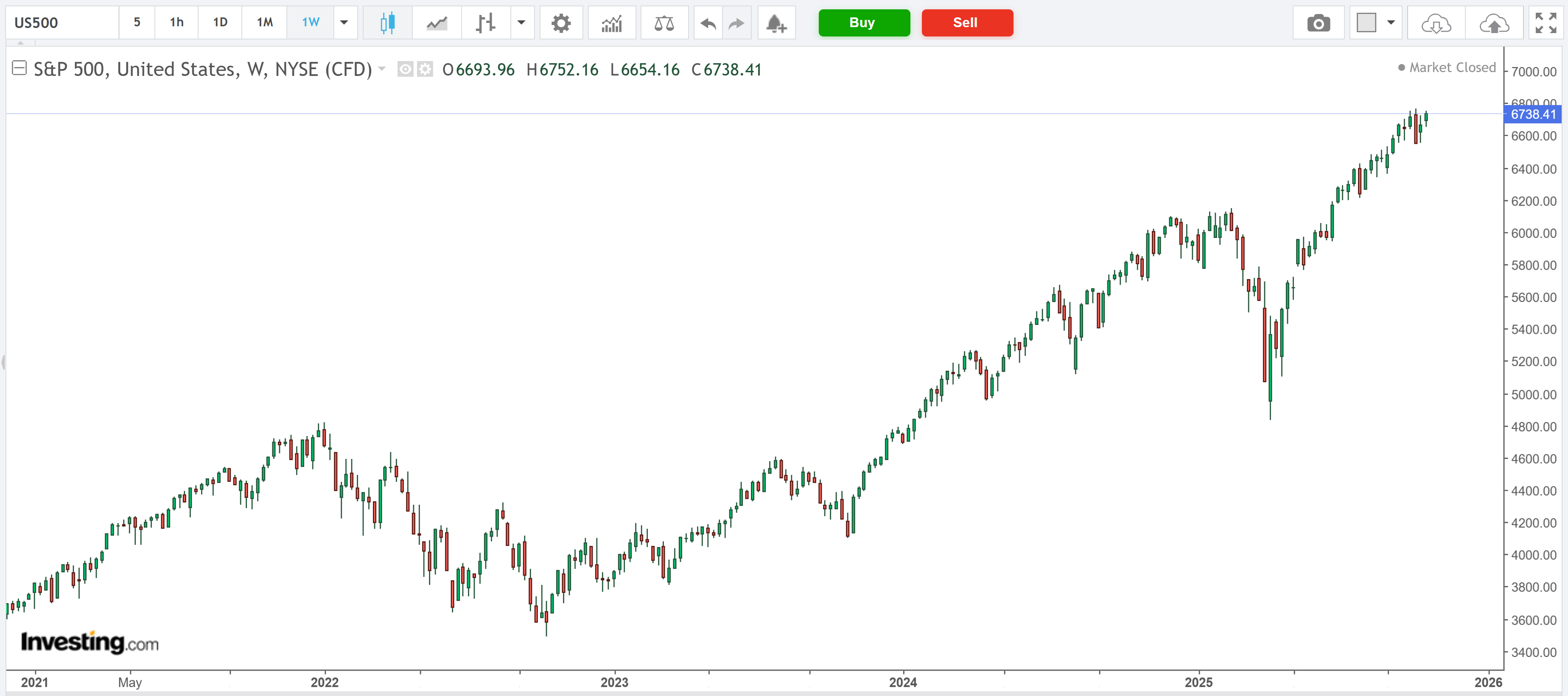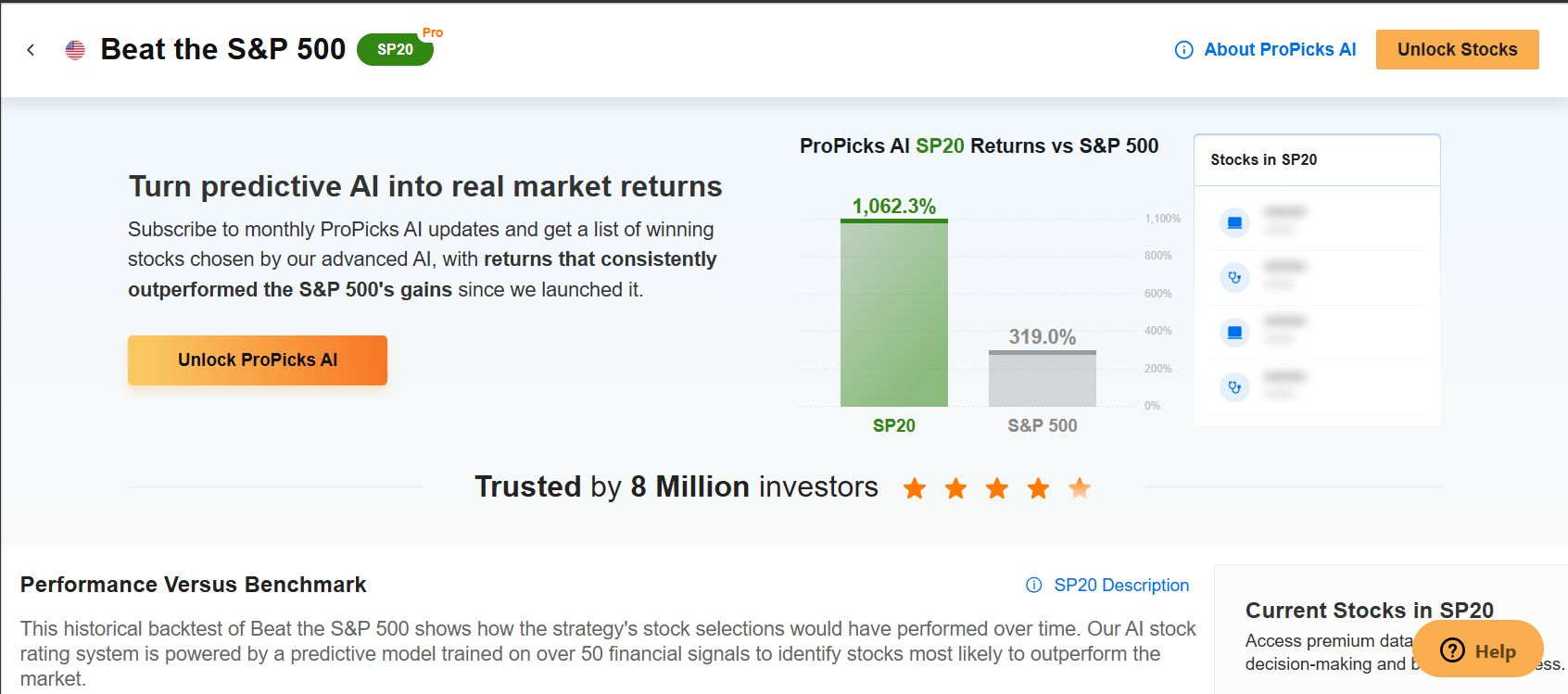As markets await the September (CPI) report, set for release Friday at 8:30 AM ET, investors and policymakers face a particularly complex backdrop with the ongoing government shutdown creating additional uncertainty around economic data interpretation and Federal Reserve policy implications.
Delayed from its original October 15 date, the September CPI reading will provide crucial insights into the trajectory of price pressures and could significantly influence the Fed’s approach to monetary policy at its upcoming October 28-29 meeting.
The government shutdown, now in its fourth week, has furloughed thousands of Bureau of Labor Statistics (BLS) employees and halted most data collections, making this the only major official economic release amid the impasse.
What to Expect
Economists anticipate a modest uptick in inflation pressures for September, driven by ongoing tariff pass-through effects on goods prices, though offset somewhat by softening in shelter costs like rents.
Source: Investing.com
Consensus calls for a 0.4% month-over-month rise in , matching the same increase in August. Year-over-year, is expected to accelerate to 3.1%, following a 2.9% rise in the preceding month.
Meanwhile, , which excludes food and energy prices, is forecast to increase by 0.3% month-over-month, with an of 3.1%, consistent with August’s reading.
If CPI runs hot (above 3.1%), it could tilt the Fed toward staying hawkish, or at least delay any . A softer number would strengthen the case for a dovish stance.
The U.S. central bank convenes for its next policy meeting just days after the CPI release. Markets are pricing in a near-certainty of a 25-basis point rate cut, bringing the federal funds target range to 3.75%-4.00%. This would mark the second consecutive cut following September’s 25bps reduction to 4.00%-4.25%.
Source: Investing.com
With no other official data (e.g., no October jobs report), the Fed may lean heavily on this CPI, as well as private indicators like payrolls and UMich . This presents a significant problem for a “data-dependent” Federal Reserve.
Market Implications
Equities have held near their record highs, but the remains vulnerable to CPI surprises.
Source: Investing.com
A hot report could spark a sell-off, particularly in rate-sensitive tech and growth stocks, and renew debate about another Fed cut. Cyclical sectors, like energy, and industrials, may fare better on tariff-driven inflation hedges. Conversely, a soft or in-line print could see risk assets extend gains, especially given labor market softness and global growth worries.
Focus on companies and sectors that can adapt to varying inflation scenarios while maintaining defensive positioning ahead of potentially volatile data releases during an uncertain political environment.
Conclusion
Investors may consider reducing position sizes or hedging exposures ahead of potentially volatile market reactions to the CPI release. The government shutdown context adds additional uncertainty that may warrant defensive positioning.
While near-term market volatility around the data release may create trading opportunities, investors should maintain focus on longer-term inflation trends and their implications for economic growth and corporate profitability.
Whether you’re a novice investor or a seasoned trader, leveraging InvestingPro can unlock a world of investment opportunities while minimizing risks amid the challenging market backdrop.
Subscribe now and instantly unlock access to several market-beating features, including:
- ProPicks AI: AI-selected stock winners with proven track record.
- InvestingPro Fair Value: Instantly find out if a stock is underpriced or overvalued.
- Advanced Stock Screener: Search for the best stocks based on hundreds of selected filters, and criteria.
- Top Ideas: See what stocks billionaire investors such as Warren Buffett, Michael Burry, and George Soros are buying.

Disclosure: At the time of writing, I am long on the S&P 500, and the Nasdaq 100 via the SPDR® S&P 500 ETF (SPY), and the Invesco QQQ Trust ETF (QQQ). I am also long on the Invesco Top QQQ ETF (QBIG), Invesco S&P 500 Equal Weight ETF (RSP), and VanEck Vectors Semiconductor ETF (SMH).
I regularly rebalance my portfolio of individual stocks and ETFs based on ongoing risk assessment of both the macroeconomic environment and companies’ financials.
The views discussed in this article are solely the opinion of the author and should not be taken as investment advice.
Follow Jesse Cohen on X/Twitter @JesseCohenInv for more stock market analysis and insight.









